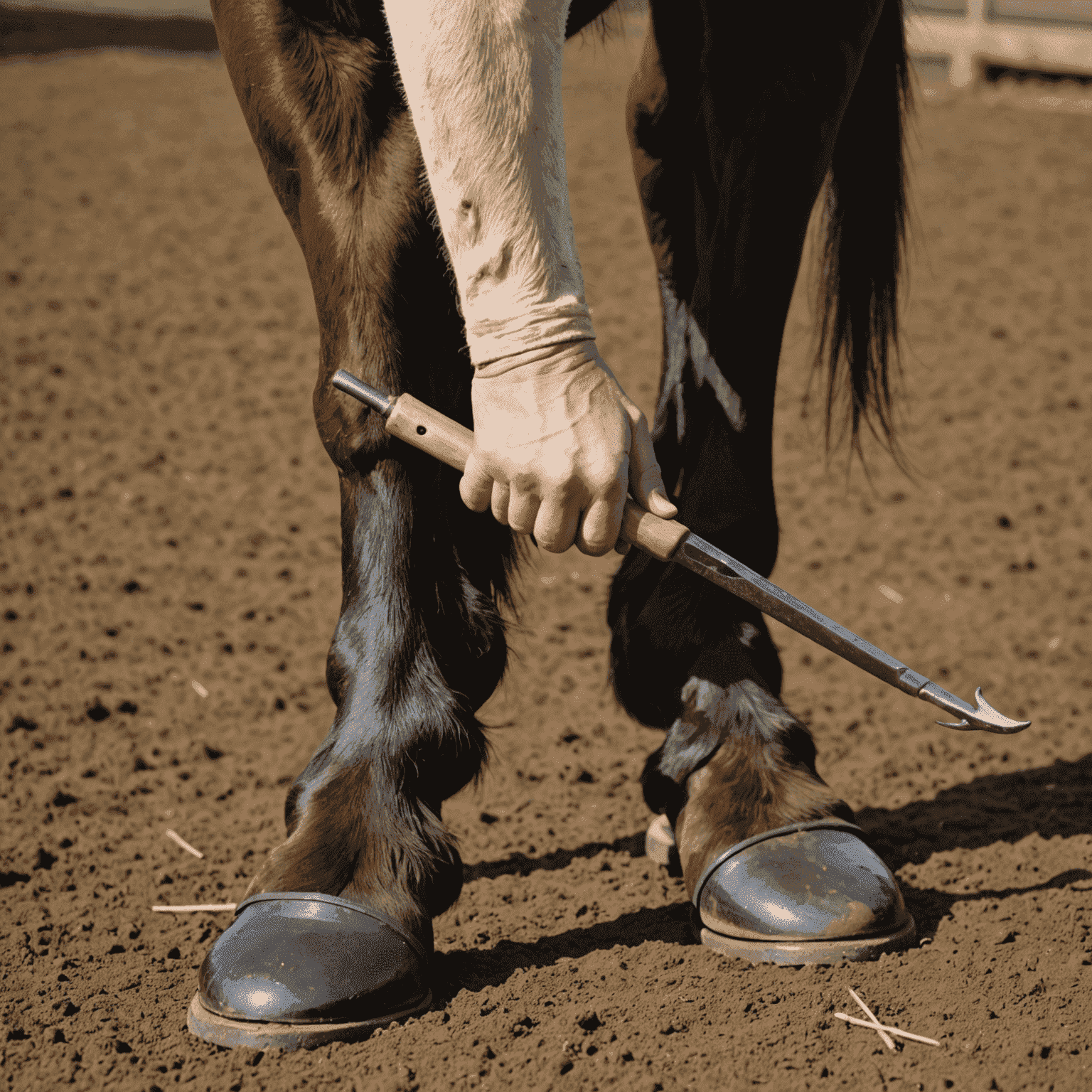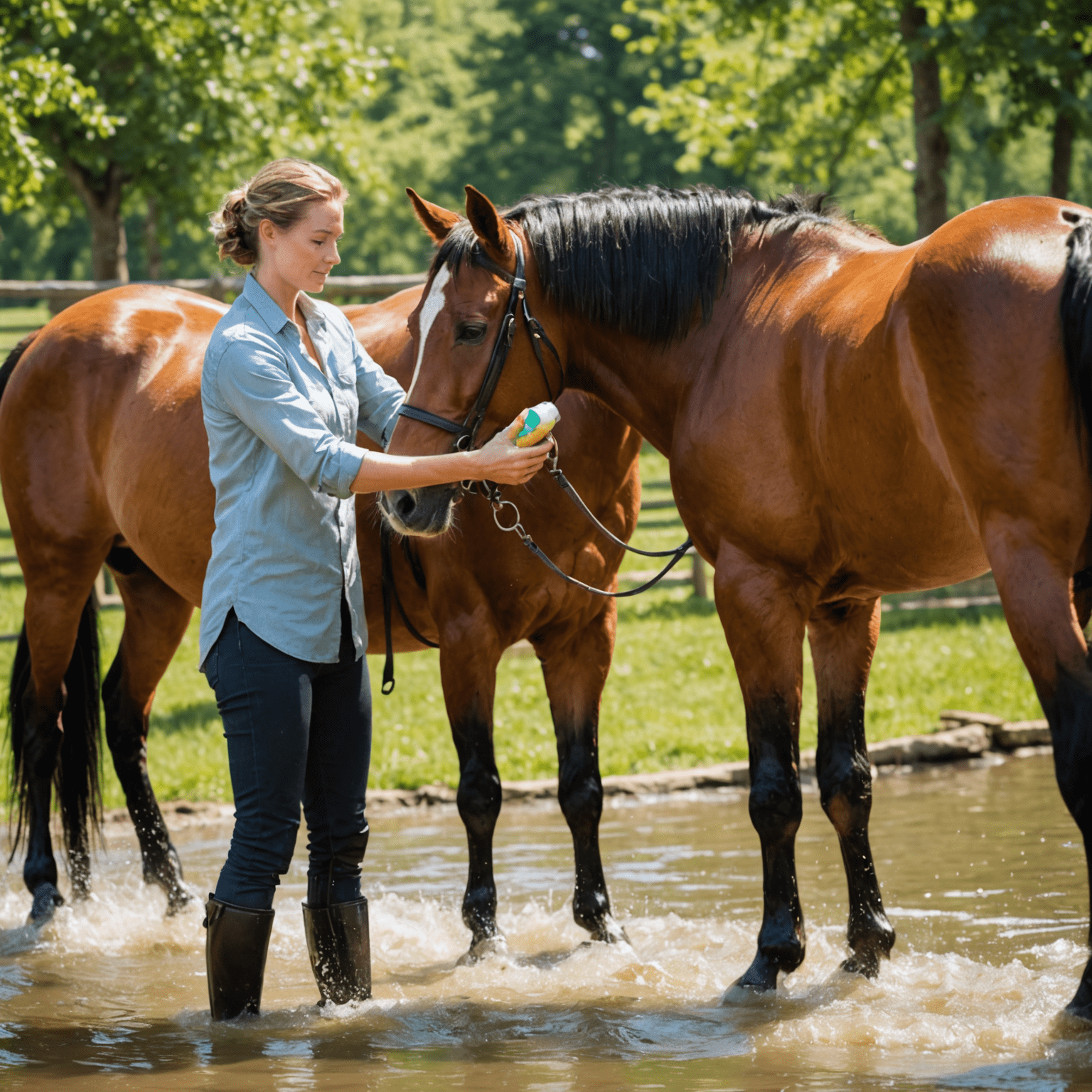Proper Grooming Techniques
Maintaining your horse's appearance isn't just about aesthetics—it's essential for their health and wellbeing. This comprehensive guide will walk you through the proper grooming techniques to keep your equine companion looking and feeling their best.

Essential Grooming Tools
Before beginning your grooming routine, gather these essential tools:
Basic Tools
- Curry comb (rubber or plastic)
- Dandy brush (stiff bristles)
- Body brush (soft bristles)
- Mane and tail comb
- Hoof pick
- Sweat scraper
- Grooming cloth/towel
Recommended Products
- Gentle shampoo formulated for horses
- Coat conditioner or detangler
- Mane and tail detangler
- Hoof conditioner
- Fly spray (seasonal)
- Coat polish or shine spray
- Antiseptic wound treatment
Daily Grooming Routine
A consistent daily grooming routine is the foundation of proper horse care at Heritage View Ranch. Follow these steps in order:
1. Secure Your Horse
Always tie your horse safely using a quick-release knot or cross-ties in a well-lit, quiet area. Speak softly and move deliberately to keep your horse calm throughout the grooming process.
2. Hoof Care
Begin with hoof care to establish a routine and ensure safety:
- Stand beside your horse, facing the rear.
- Run your hand down the leg and gently squeeze the tendon to signal your horse to lift their hoof.
- Use the hoof pick to clean from heel to toe, removing all dirt, manure, and debris from the sole and around the frog.
- Check for signs of thrush, fissures, or loose shoes.
- Apply hoof conditioner if needed, especially in dry conditions.
Repeat for all four hooves.

3. Curry Combing
The curry comb loosens dirt, hair, and debris:
- Use the curry comb in circular motions over the horse's body, applying gentle pressure.
- Work from neck to hindquarters, avoiding sensitive areas like the face, spine, and lower legs.
- Pay special attention to areas where the horse sweats most: behind the ears, under the mane, and around the girth area.
4. Dandy Brush
The stiff-bristled dandy brush removes the loosened dirt and hair:
- Use short, flicking motions away from the coat to remove debris loosened by the curry comb.
- Work in the direction of hair growth.
- Avoid sensitive areas; use only on the body, neck, and hindquarters.
5. Body Brush
The soft-bristled body brush provides the finishing touch:
- Use long, sweeping strokes in the direction of hair growth.
- This brush can be used on all areas, including the face and legs.
- The body brush distributes natural oils through the coat, creating shine.
- Clean the brush frequently on a curry comb to remove accumulated dirt and hair.
6. Face Grooming
The face requires special attention and gentleness:
- Use a soft cloth or very soft brush specifically for the face.
- Clean around the eyes and nostrils with a damp cloth.
- Be extremely gentle and patient.
- Consider using a separate cloth for eyes and nostrils for hygiene.

7. Mane and Tail Care
Proper mane and tail care prevents breakage and tangles:
- Apply detangler to make combing easier and prevent hair breakage.
- Start at the bottom of the mane/tail and work upward in small sections.
- Use your fingers or a wide-toothed comb to gently work through tangles.
- Never pull or force the comb through knots.
- For show preparation, consider braiding the mane and wrapping the tail.
8. Final Touches
Complete the grooming session with these finishing steps:
- Use a clean grooming cloth to wipe down the entire coat for extra shine.
- Apply coat polish or shine spray if desired.
- Check for any cuts, swellings, or skin issues you may have missed.
- Apply fly spray during fly season.
Bathing Your Horse
While daily grooming is essential, occasional bathing keeps your horse's coat in optimal condition. Here's how to bathe your horse properly:
Bathing Guidelines
- Bathe only in warm weather when the temperature is above 65°F (18°C).
- Choose a non-slip area with good drainage.
- Use lukewarm water and horse-specific shampoo.
- Start by thoroughly wetting the coat, working from the hooves upward.
- Apply shampoo and lather in sections, avoiding the face and ears.
- Rinse thoroughly until water runs clear—residual shampoo can cause skin irritation.
- Use a sweat scraper to remove excess water.
- For the face, use a damp cloth with minimal or no shampoo.
- Allow your horse to dry in a clean, warm area away from drafts.

Seasonal Grooming Considerations
Adjust your grooming routine based on the season to address specific challenges:
Summer Grooming
- Increase bathing frequency to remove sweat and dirt.
- Apply sunscreen to horses with pink skin or white markings.
- Use fly spray regularly and maintain a fly sheet if needed.
- Check for and treat any skin irritations from insects.
- Consider a trace clip for horses that sweat heavily.
Winter Grooming
- Avoid full baths; spot-clean when necessary.
- Groom thoroughly to stimulate circulation and distribute oils.
- Pay special attention to areas under blankets to prevent skin issues.
- Check for mud fever in wet conditions.
- Apply petroleum jelly to heels in snowy conditions to prevent snowball formation.
- Maintain regular hoof care despite reduced riding.
Show Preparation
For competitions or special events, enhance your regular grooming routine with these additional steps:
Show Grooming Techniques
- Bathing: Schedule a thorough bath 1-2 days before the show.
- Mane and tail: Wash separately with specialized shampoo and conditioner.
- Braiding: Practice discipline-appropriate braiding techniques for manes and tails.
- Clipping: Trim bridle path, ears, muzzle, and fetlocks according to breed standards.
- Quarter marks: Apply appropriate patterns for your discipline.
- Hoof polish: Apply clear or black polish based on discipline and horse color.
- Final shine: Use a specialized show sheen product on the body (avoid saddle area).
Grooming for Health
Regular grooming provides an opportunity to monitor your horse's health:
Health Checks During Grooming
- Monitor for skin conditions: rain rot, scratches, hives, or fungal infections.
- Check for external parasites: ticks, lice, or mites.
- Note any new lumps, bumps, cuts, or swellings.
- Observe changes in coat quality, which may indicate nutritional deficiencies.
- Monitor hoof condition for fissuress, thrush, or abnormal growth.
- Document any concerns and consult your veterinarian when necessary.
Heritage View Ranch Tip
Consistency is key to effective grooming. Even a quick 10-minute daily session is better than an occasional thorough grooming. Make it part of your routine, and your horse will benefit from both the physical care and the bonding time.